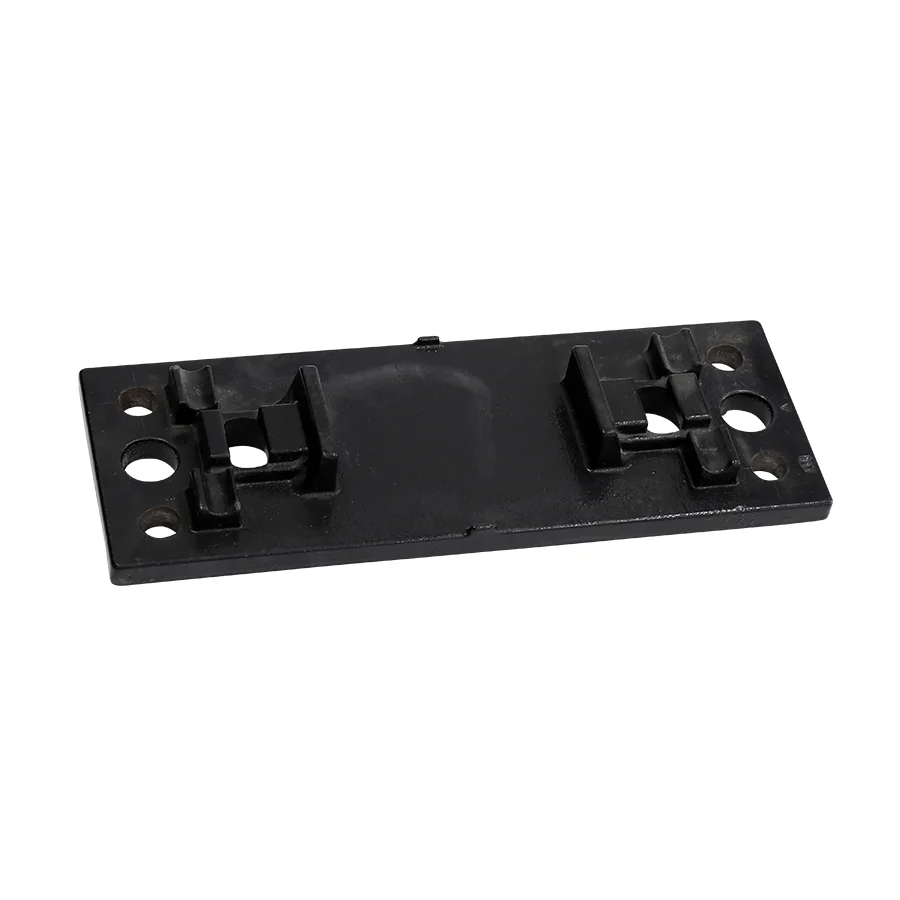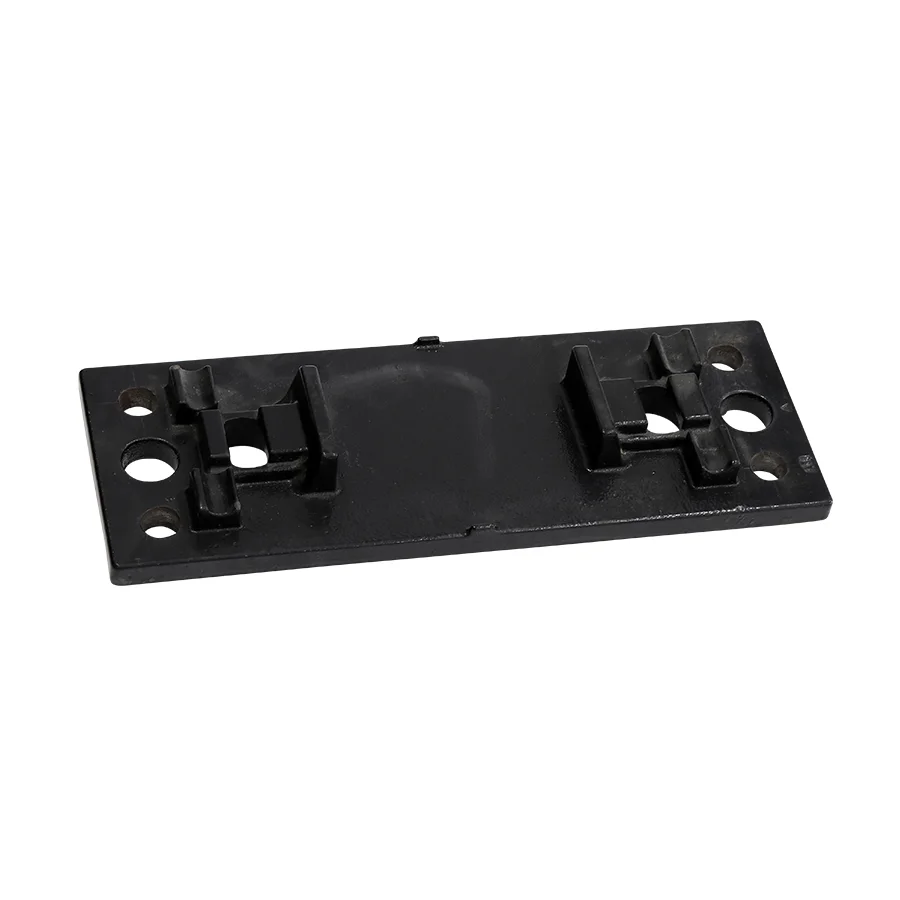Modern railway systems depend on a variety of components that work together to ensure safe, efficient, and long-lasting performance. Among these essential components, the rail tie plate—also known as the rail base plate or sole plate—plays a crucial role. Though often overlooked compared to rails or sleepers, tie plates are vital in maintaining track stability and preventing premature wear.

HuiBo Railway, a trusted manufacturer in the railway industry, specializes in producing high-quality rail tie plates designed for diverse applications, including crane rail systems and heavy-duty railway track support.
What is a Rail Tie Plate
A rail tie plate is a flat steel plate placed between the rail and the sleeper (also called a railroad tie). Its primary role is to provide a stable foundation for the rail, distribute loads evenly, and protect sleepers from direct wear. By doing so, tie plates extend the service life of railway components and enhance overall track safety.
In railway and crane rail construction, tie plates are not optional; they are critical. Without them, rails could shift, sleepers could deteriorate rapidly, and track alignment could be compromised.
Functions of Rail Tie Plates
Load Distribution
Rail tie plates spread the vertical and lateral forces exerted by passing trains, preventing stress concentration on sleepers. This ensures uniform load-bearing capacity and minimizes damage.
Rail Positioning
With shoulders or grooves, tie plates secure the rail in place, preventing lateral or longitudinal movement. This helps maintain proper gauge distance, which is fundamental to railway safety.
Wear Reduction
Tie plates act as a buffer, reducing friction and impact between the rail and the sleeper. This decreases wear on both components.
Crane Rail Support
In crane rail systems, tie plates provide a stable, flat base that ensures smooth crane operation under heavy loads.
HuiBo Railway Rail Tie Plates
HuiBo Railway produces a wide range of rail tie plates, also referred to as rail base plates or sole plates, for use in railway and crane rail support systems. Their products are engineered to meet international standards and are known for:
-
Precision Manufacturing: Produced with advanced casting and forging processes.
-
Material Quality: Available in cast steel, rolled steel, and alloy steel to match project requirements.
-
Durability: Designed to withstand heavy loads and extreme conditions.
-
Customization: Tailored solutions for different track designs, gauges, and applications.
By integrating quality materials and strict quality control, HuiBo Railway ensures each tie plate provides long-lasting reliability.
Types of Rail Tie Plates
Single Shoulder Rail Tie Plate
Features one shoulder to hold the rail.
Typically used with lighter rails or specific track configurations.
Double Shoulder Rail Tie Plate
Shoulders on both sides for greater stability.
Commonly used in heavy-duty railways and crane systems.
Crane Rail Sole Plate
Specifically designed for crane tracks.
Provides strong anchorage and load-bearing performance.
Materials and Production
Rail tie plates are made from durable materials to withstand harsh working conditions:
-
Cast Steel: Provides high strength and resistance to wear.
-
Rolled Steel: Ensures consistent quality and toughness.
-
Alloy Steel: Offers superior performance under heavy stress and fatigue.
HuiBo Railway applies advanced forging, casting, and heat treatment processes, ensuring each tie plate meets strict performance requirements.
Applications of Rail Tie Plates
Mainline Railway Systems
Used in high-speed and freight rail networks for safe and stable performance.
Urban Transit Systems
Applied in metro and light rail projects for consistent alignment and minimal vibration.
Industrial Railway Tracks
Essential in steel plants, mining sites, and factories for internal heavy material transport.
Crane Rail Systems
Provides stable support for cranes in ports, warehouses, and construction sites.
Benefits of Choosing HuiBo Railway Rail Tie Plates
-
Enhanced Track Stability: Secure rail positioning reduces derailment risks.
-
Extended Service Life: Protection of sleepers and rails lowers replacement frequency.
-
Cost Efficiency: Reduced maintenance costs over time.
-
International Standards: Products meet global railway safety and quality standards.
-
Customized Solutions: Designed to meet specific infrastructure needs.
Conclusion
In modern railway infrastructure, the rail tie plate is far more than a simple steel plate. It is a vital component that ensures track stability, safety, and efficiency across diverse railway and crane rail applications. HuiBo Railway provides reliable, high-quality rail tie plates engineered to meet the demands of today’s railway and industrial systems. By choosing HuiBo Railway products, project managers and engineers can ensure long-lasting performance, cost savings, and compliance with global safety standards.
For safe, durable, and efficient railway construction, rail tie plates by HuiBo Railway remain a cornerstone of modern infrastructure.
https://www.hbrailwayfastening.com/the-role-of-rail-tie-plates-in-modern-railway-infrastructure.html



